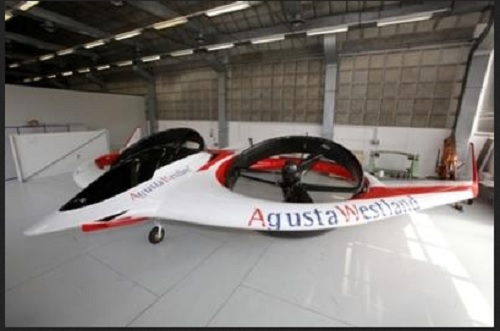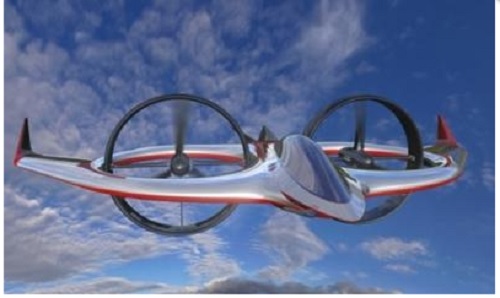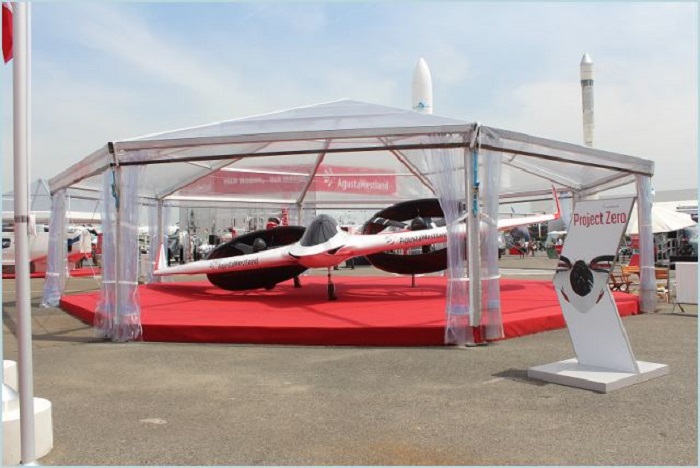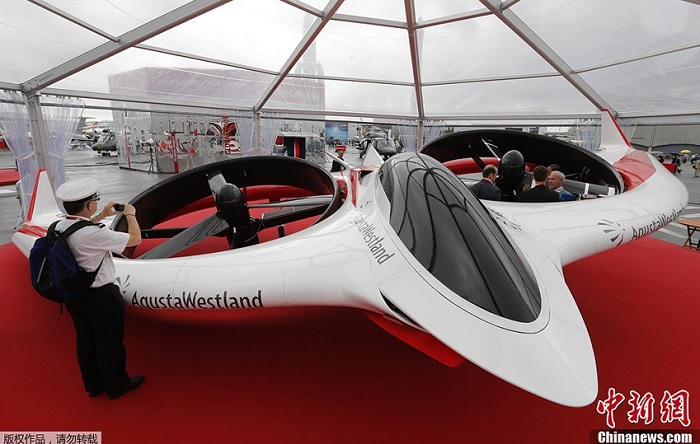.

Electric VTOL Aircraft Is Turning Heads In France
Among the thousands of aircraft and products on display at the Paris Air Show getting a lot of attention this week is one that may never reach production, but which could serve as a proving ground for many concepts that eventually do.
AgustaWestland's Project Zero electric tilt-rotor single-seat VTOL aircraft has been turning heads at Le Bourget. The futuristic-looking aircraft, first introduced by AgustaWestland at Heli-Expo in Las Vegas in March, is the result of close collaborations with Finmeccanica companies - Selex ES, Ansaldo Breda, and Ansaldo Energia - and partner companies from Italy, U.K., U.S.A. and Japan. The entire aircraft exterior surface is carbon graphite, and it uses no hydraulics; the retractable landing gear, nacelle tilting mechanism, and elevons are controlled by high bandwidth electromechanical actuators (EMA) specifically developed for the program.
An efficient diesel engine for the alternative electric-hybrid propulsion solution was developed specifically for the aircraft, as was a customized special motor cooling system, wiring harness and retractable landing gears.
The "Project Zero" technology demonstrator was designed, built and tested in twelve months. Daniele Romiti, AgustaWestland’s CEO, said at its introduction earlier this year that “The ‘Project Zero’ technology demonstrator program brings together many of the advanced technologies AgustaWestland has been researching in recent years and demonstrates our strong technological base from which we will develop new products to meet the needs of our customers in the future. We strongly believe in the tilt rotor concept as the future of high speed rotorcraft flight as it offers much greater speed and range than compound helicopter technology.”
The demonstrator’s rotors are driven by advanced electric motors powered by rechargeable batteries; future hybrid solutions have also been investigated using a diesel engine to drive a generator. All of the aircraft control systems, flight control and landing gear actuators are electrically powered, removing the need for any hydraulic system.

During cruise, the wings will provide most of the lift, with the blended fuselage and shroud also making a contribution. ‘Project Zero’ has been designed with detachable outer wings for missions that will be performed primarily in helicopter mode. Elevons provide pitch and roll control in forward flight while the V-tail provides longitudinal stability. The aircraft has very low noise and thermal signature in flight and does not require oxygen, thereby permitting it to fly at altitude or in heavily polluted conditions, such as volcanic eruptions. The demonstrator’s rotors when on the ground can be tilted forward and the aircraft pointed into wind to allow the rotors to windmill and recharge the aircraft’s electrical storage device. The electrical drive system also has the advantage that it does away with the complex and heavy transmission system required by conventional rotorcraft.

Quelle: Agusta Westland
-



Quelle: CHINANEWS
